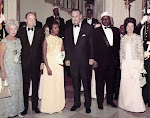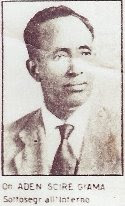Kampala — The swearing-in last week of Somalia's new President Mohamed Abdullahi "Farmajo" was greeted with a surge of optimism on the streets of Mogadishu that a new era of stability was on its way.
He won by a landslide, on a wave of nationalist fervour. But the fact that the ceremony took place in a highly secured airport zone, under the control of African Union peacekeepers, in a city repeatedly bombed by the jihadist group al-Shabab, betrays how huge the task confronting him is.
The International Crisis Group's latest report said Farmajo had benefited from being seen as the right leader "to build a robust Somali National Army (SNA), speed up the African Union Mission in Somalia (AMISOM)'s exit, stabilise security, curb interventions by neighbouring countries, and protect Somalia's dignity and sovereignty."
But this is an ambitious wish list and the path ahead is fraught with danger.
Countdown
Central to Somalia's security is the 22,000-strong AMISOM multinational force. It has been in Somalia for a decade, battling al-Shabab and helping slowly expand state authority.
AMISOM is due to start withdrawing its troops from October next year and is expected to be fully out of the country by December 2020, handing over to the SNA, which will probably number just 20,000.
"AMISOM alone cannot defeat al-Shabab," said a report last year by Mogadishu's Heritage Institute for Policy Studies (HIPS). "This can only happen if AMISOM can partner with a capable, legitimate and inclusive set of Somali security forces."
But the Somali National Army is a force beset with problems, particularly over corruption, capacity and its acceptance in regions beyond Mogadishu. At the moment, there are doubts it will be able to stand up to a degraded, but still dangerous, insurgency.
Francisco Madeira, AU special representative to Somalia, is painfully aware of that challenge. "Building the capacity of the Somali National Security Forces is something that is central to the mandate of AMISOM, and we are doing this to the best of our ability and within the available resources," he told IRIN
oo soon?
Given this, and the historically weak and divided nature of the Somali state, experts fear AMISOM's departure will be premature.
"It seems highly unlikely to me that the Somali army [and state institutions] would be ready in just three years, given the current state of the security situation," said Nina Wilen, a research fellow at Université Libre de Bruxelles.
"A withdrawal of AMISOM in 2020 will be untimely," agreed Christian Ani Ndubuisi, a researcher at the Institute for Security Studies. A more viable option, he believes, is for international donors to support a longer transition, of five to 10 years.
The challenge for AMISOM is that exiting Somalia with some honour hinges on several factors beyond its control. Crucially, it relies on international funding, and not enough has been forthcoming "to seriously degrade rather than simply displace al-Shabab", said the HIPS report.
AMISOM draws its main fighting forces from Uganda, Ethiopia, Kenya and Burundi. Allowances for the troops are paid by the EU, and logistical support - from food to medical supplies - is provided by the UN. The attack helicopters it desperately needs have not been available.
There is also now trouble in the ranks of the troop-contributing nations, which have threatened to withdraw ever since the EU cut the monthly allowance paid to soldiers by 20 percent in January 2016, from $1,028 to $822.
While the AU argues that its soldiers bleed and the West provides only money, the EU counters that there are other peace operations on the continent deserving of its support, including Central African Republic, Mali and the Lake Chad crisis.
"AMISOM will celebrate its 10th year this year, and the main funder [the EU] does not see the light at the end of the tunnel," said Thierry Vircoulon, ICG project director for Central Africa. "It is not ready to fund another never-ending peacekeeping mission as the UN usually does."
Somalia: Countdown to AMISOM Withdrawal - Is Somalia Ready? - allAfrica.com


.jpg)











No comments:
Post a Comment